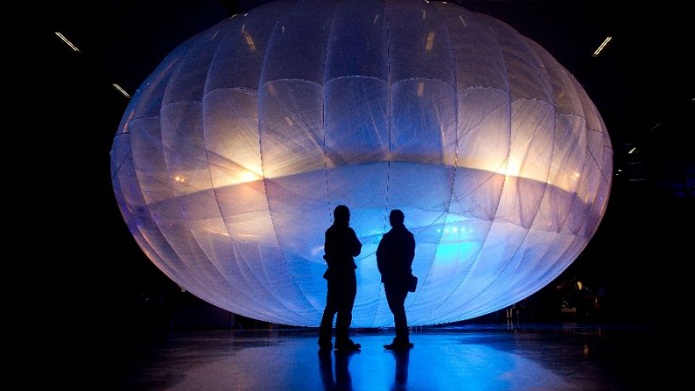Google`s X lab chief sees Internet reaching billions

Teller shared insights into the X team`s balloon-powered high-speed Internet service known as "Project Loon," which aims to get billions more people online by reaching remote or rural regions that are not yet connected.
"There is a lot of different technology out there, rolling them out will be complicated," Teller said.
"But, somewhere between five and ten years, it will change the world in ways we can not possibly imagine."
Project Loon began its first tests in Sri Lanka on Monday ahead of a planned joint venture with the government there, the country`s top IT official told AFP.
It promises to extend coverage and cheaper rates for data services.
Service providers will be able to access higher speeds and improve the quality of their existing service once the balloon project is up and running.
Once in the stratosphere, the balloons will be twice as high as commercial airliners and barely visible to the naked eye.
Teller told the TED audience that he expected Project Loon balloons to be tested over Indonesia this year.
Craziest idea to date
The project, he quipped, might be the craziest to date at the X lab, which was once part of Google but became a separate unit with a restructuring that created parent company Alphabet.
The name of the project was intended to remind the team how bizarre it initially seemed.
As with all their projects, members of the X team first tackled the toughest technical challenges facing Loon with an eye toward quickly scuttling the mission if the goal was not realistic, according to Teller.
"We had round silvery balloons; giant pillow-shaped balloons, balloons the size of a blue whale," Teller said.
"We busted a lot of balloons."
Each potentially terminal technology challenge for Loon has been surmounted well enough to continue the project.
The current design is a balloon within a balloon, one containing helium to keep it aloft and the other with air that can be released or added to alter the weight and, as a result, move up or down to ride the wind.
Kudos for failure
The balloons can navigate fairly well, and send Internet signals to each other in order to increase their reach into remote areas.
As a Loon balloon floats out of an area, it hands the connection off to another floating into that same area.
And, Teller said, the bandwidth is good enough to stream free online TED talks for which the conference is renowned.
Last year, one of the balloon stayed up for 187 days, he said, circling the world more than a dozen times.
"Our balloons today do everything we need," Teller said. "So we are going to keep going."
Teller said his team refers to their base as "The Moonshot Factory" because their goal is to blend audacious ideas with the realities of getting them to market.
People on the X team get kudos, bonuses and even promotions for finding fatal flaws that kill projects and thereby let resources shift to more promising dreams.
"We use the word `moonshot` to remind us to keep our vision big, and the word `factory` to remind ourselves that we need concrete plans to make them real," Teller said.
"We spend most of our time trying to break things and prove we are wrong."
X lab`s work on an automated system for vertical farming was killed last year when the team couldn`t get it to grow staple crops such as grains or rice.
An ultra-light air-ship for hauling cargo was abandoned after the team realized the costs to build the first prototype would be astronomical.
"We can`t spend $200 million to get the first data point about whether we are on the right track," Teller said. "So we killed it."
The lab`s self-driving car was a natural moonshot, and is humming along, according to Teller.















































